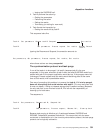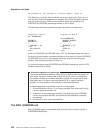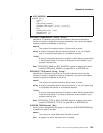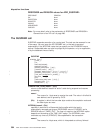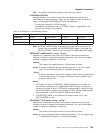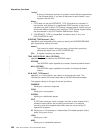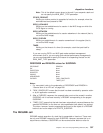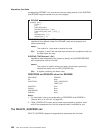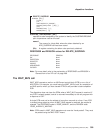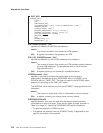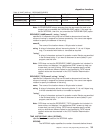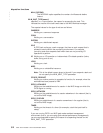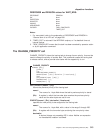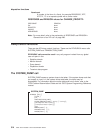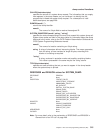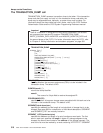
DELETE_SUSPEND
DFHDSSRX [CALL,]
[CLEAR,]
[IN,
FUNCTION(DELETE_SUSPEND),
SUSPEND_TOKEN(name4 | (Rn)),]
[OUT,
RESPONSE(name1 | *),
REASON(name1 | *)]
SUSPEND_TOKEN(name4 | (Rn) )
specifies a token assigned by the system to identify the SUSPEND/RESUME
pair of operations used on the task.
name4
The name of a 4-byte field, where the token obtained by an
ADD_SUSPEND call has been stored
(Rn) A register containing the token value previously obtained.
RESPONSE and REASON values for DELETE_SUSPEND:
RESPONSE REASON
OK None
EXCEPTION None
DISASTER None
INVALID None
KERNERROR None
PURGED None
Note: For more detail, refer to the explanation of RESPONSE and REASON in
“General form of an XPI call” on page 286.
The WAIT_MVS call
WAIT_MVS requests a wait on an MVS event control block (ECB) or on a list of
MVS ECBs. For example, you could issue the WAIT_MVS to wait for completion of
an MVS task for which you have issued ATTACH and provided a task-completion
ECB.
The dispatcher does not clear the ECBs when a WAIT_MVS request is received. If
any ECB is already posted, control is returned immediately to the exit program with
a response of ‘OK’.
A single ECB must not be the subject of more than one wait at a time. If any ECB
is already being waited on when a WAIT_MVS request is received, the request is
rejected. The RESPONSE code is ‘DSSR_INVALID’, and the REASON code
‘DSSR_ALREADY_WAITING’.
Note: ECBs used in WAIT_MVS requests must never be “hand posted”. They must
be posted using the MVS POST macro.
dispatcher functions
Chapter 3. The user exit programming interface (XPI) 309



